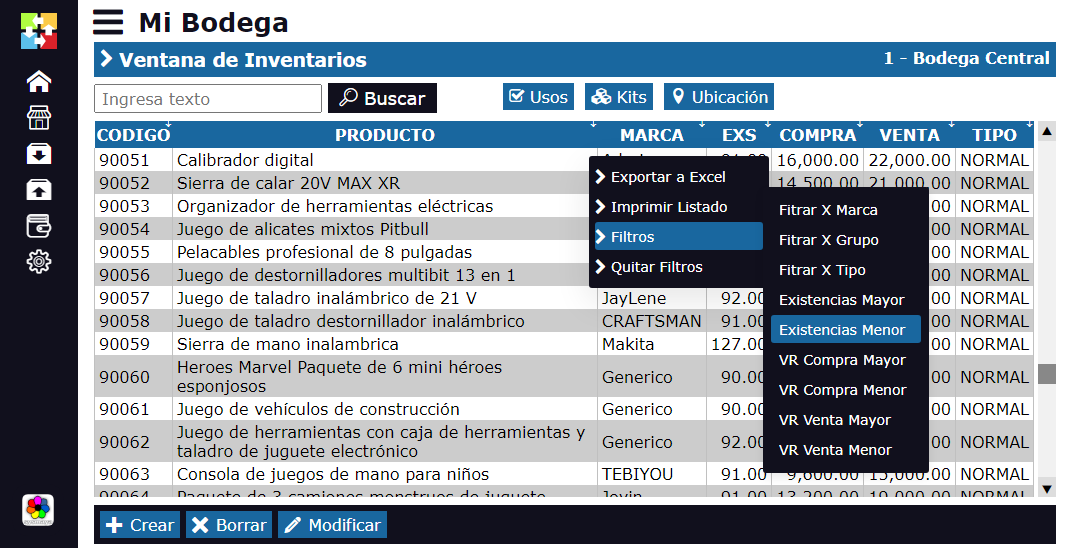Accounting Dictionary - Letter L

- Ledger: A book or computer file that contains a record of all financial transactions, often used in accounting and bookkeeping.
- Liability: A debt or obligation that a company or individual owes to another party, often used in financial reporting and risk management.
- Liquidity: The ability of a company or individual to meet its short-term financial obligations, often used in financial reporting and risk management.
- Lien: A claim or security interest in a property or asset, often used in financial reporting and risk management.
- Liquidation: The process of selling off a company's assets to pay off its debts, often used in financial reporting and risk management.
- Loan: A type of debt that is borrowed from a lender, often used in financial reporting and risk management.
- Loss: A decrease in value or a negative financial result, often used in financial reporting and risk management.
- Lump sum: A single payment or amount, often used in financial reporting and accounting.
- LIFO (Last-In-First-Out): A method of inventory valuation that assumes the most recent items purchased or produced are the first to be sold.
- LIBOR (London Interbank Offered Rate): A benchmark interest rate that is used to set interest rates for loans and other financial instruments.
- Leverage: The use of debt to finance a company's operations or investments, often used in financial reporting and risk management.
- Leasehold: A type of property ownership that involves renting or leasing a property, often used in financial reporting and real estate.
- Lease: A contract that outlines the terms and conditions of renting or leasing a property, often used in financial reporting and real estate.
- Lessee: The party that rents or leases a property, often used in financial reporting and real estate.
- Lessor: The party that owns the property being rented or leased, often used in financial reporting and real estate.
- Line of credit: A type of loan that allows a company or individual to borrow up to a certain amount, often used in financial reporting and risk management.
- Liquid assets: Assets that can be easily converted into cash, often used in financial reporting and risk management.
- Long-term debt: A type of debt that is due in more than one year, often used in financial reporting and risk management.
- Levy: A tax or fee that is imposed by a government or other authority, often used in financial reporting and taxation.
- Lapse: A failure to pay premiums or maintain coverage, often used in financial reporting and insurance.
- Limited liability: A type of business ownership that limits the liability of the owners, often used in financial reporting and corporate finance.
- Liquidator: A person or company that is responsible for liquidating a company's assets, often used in financial reporting and risk management.
- Listing: The process of registering a security or other financial instrument with a regulatory authority, often used in financial reporting and securities regulation.
- Litigation expense: A type of expense that is related to lawsuits or other legal proceedings, often used in financial reporting and risk management.
- Letter of credit: A document that guarantees payment to a seller or other party, often used in financial reporting and international trade.
- Loophole: A technicality or weakness in a law or regulation that can be exploited for financial gain, often used in financial reporting and taxation.
- Lockbox: A type of bank account that is used to collect and process payments, often used in financial reporting and cash management.
- Linked account: A type of bank account that is linked to another account, often used in financial reporting and cash management.
- Lawyer's letter: A document that is written by a lawyer to provide legal advice or opinion, often used in financial reporting and risk management.
- Leverage ratio: A financial ratio that measures a company's use of debt, often used in financial reporting and risk management.
- Lifecycle costing: A method of costing that takes into account the entire lifecycle of a product or asset, often used in financial reporting and management accounting.
- Lower of cost or market: A method of inventory valuation that assumes the lower of the cost or market value of an item, often used in financial reporting and accounting.
- Lucrum cessans: A type of damage or loss that is suffered by a company or individual, often used in financial reporting and risk management.
- Ledger balance: The balance of a ledger account, often used in financial reporting and accounting.
- Lapping: A type of accounting error that involves misstating the balance of a ledger account, often used in financial reporting and accounting.
- Laundering: The act of concealing or disguising the source of funds or assets, often used in financial reporting and risk management.
- Last-in-First-Out Method: A method of inventory valuation that assumes the most recent items purchased or produced are the first to be sold.
- Leasehold improvements: Improvements made to a leased property, often used in financial reporting and real estate.
- Lien waiver: A document that waives a lien or security interest in a property or asset, often used in financial reporting and risk management.
- Limit order: A type of order that is used to buy or sell a security at a specific price, often used in financial reporting and securities regulation.
- Limited partner: A partner in a partnership who has limited liability, often used in financial reporting and corporate finance.
- Lineup: A list of items or transactions, often used in financial reporting and accounting.
- Liquid capital: Capital that can be easily converted into cash, often used in financial reporting and risk management.
- Liquidated damages: Damages that are paid to a party in the event of a breach of contract, often used in financial reporting and risk management.
- Liquidating dividend: A dividend that is paid to shareholders in the event of a company's liquidation, often used in financial reporting and corporate finance.
- Liquidity preference: The preference for holding liquid assets, often used in financial reporting and risk management.
- Liquidity ratio: A financial ratio that measures a company's liquidity, often used in financial reporting and risk management.
- Longevity risk: The risk that a company or individual will live longer than expected, often used in financial reporting and risk management.
- Long position: A position in a security or other financial instrument that is expected to increase in value, often used in financial reporting and securities regulation.
- Long-term assets: Assets that are expected to be held for more than one year, often used in financial reporting and risk management.
- Long-term liabilities: Liabilities that are due in more than one year, often used in financial reporting and risk management.
- Loss adjustment expenses: Expenses that are related to adjusting and settling insurance claims, often used in financial reporting and risk management.
- Loss carry-forward: A loss that is carried forward to a future period, often used in financial reporting and taxation.
- Loss leader: A product or service that is sold at a loss to attract customers, often used in financial reporting and marketing.
- Loss payee: A party that is entitled to receive payment in the event of a loss, often used in financial reporting and risk management.
- Loss ratio: A financial ratio that measures the amount of losses relative to premiums or revenues, often used in financial reporting and risk management.
- Loss reserve: A reserve that is set aside to cover potential losses, often used in financial reporting and risk management.






